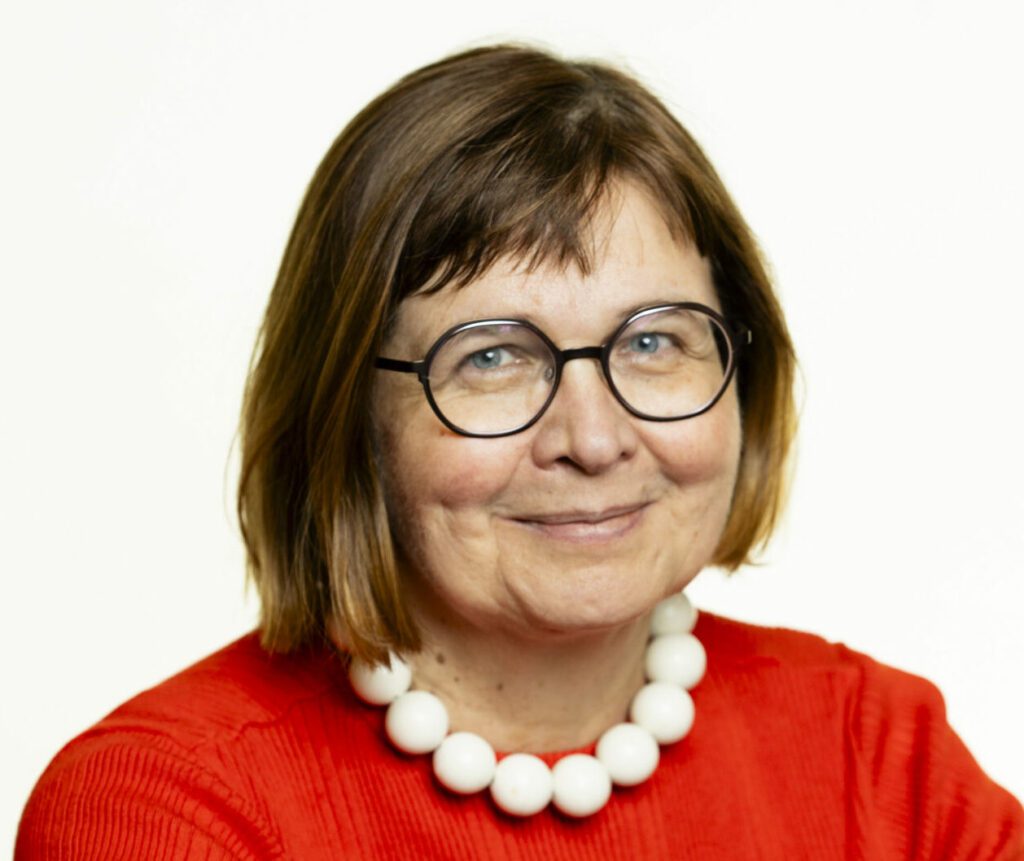Anne Toppinen: “Building with wood is a good climate action and one that is also well regarded”
Forest Economist Anne Toppinen researches attitudes towards wood construction and forest ownership. She wants to see more climate-friendly apartment buildings built of wood in Finnish cities.
Anne Toppinen, vice dean and professor and chair in markets and marketing for forest products, roundwood and services, at the University of Helsinki, has a long university career. Her work focuses on forest-related responsibility and sustainability issues from an economic and business economics perspective. She became a professor in 2008 and also led Helsinki Institute of Sustainability Science HELSUS from 2018 to 2022.
In recent years, Toppinen’s research has covered topics including low-carbon housing, responsibility practices in the forest industry and forest owners’ attitudes towards climate action.
Houses built of wood and cosy neighbourhoods
Toppinen brings an understanding of wood construction, among other things, to the Finnish Climate Change Panel.
Wood construction has become one way of promoting low-carbon housing, especially in the Nordic countries, the US, Canada, France and Austria.
“I’m interested in the attitudes and barriers to wood construction,” says Toppinen.
According to Toppinen, only around five per cent of urban apartment buildings in Finland are made of wood. In Sweden, the corresponding figure is 20%.
“Despite a strong will, construction using wood has not become mainstream. Municipalities and cities emphasising climate resilience in their land-use planning would benefit matters. Estate agents having a broad understanding of the subject would also help.”
However, there is still hope, as two thirds of Finnish consumers consider it important that wood is used as the main material for building residential buildings.
Toppinen co-founded the six-year DeCarbon Home project, funded by the Strategic Research Council, which focuses in particular on suburbs and sparsely populated areas in need of an upgrade and improved energy efficiency.
“For example, wood could be used to make suburbs developed in the 1960s and 1970s more appealing.”
Potential for conflicts between climate targets and actions
Toppinen is also interested in climate justice issues.
Her research has explored issues such as forest owners’ attitudes to climate policy and what kinds of climate actions they consider acceptable and unacceptable.
Toppinen also encounters climate justice in her work, where she meets plenty of students concerned about climate change.
“They don’t consider the future to be very bright. However, there can be conflict between what students – and other members of the population – want and climate actions. For example, many people with climate anxiety also travel a lot, which is at odds with a climate-resilient lifestyle.”
“Another factor is that not everyone can afford to make sustainable consumption choices in their everyday life.”
“This raises big questions. Are climate policy actions effective enough to bring about the desired changes in both businesses and households? And is climate policy perceived as equally fair among all population groups?”
There are plenty of good things happening too, Toppinen is keen to emphasis.
“Consumption of plant proteins and adoption of plant-based diets have become more widespread over the past five years. We have new options and there is demand for them, too.”
Toppinen also praises the growing energy efficiency in construction and housing, and the gradual electrification of transport. The latter in particular has been supported by political decisions.
“These are important positive changes in people’s daily lives. At the same time, it is worth asking whether the subsidies are too heavily weighted towards high-income families.”
Toppinen, who lives in Porvoo, likes to spend her free time on and by the water. In the summer, she goes canoeing in the sea and on the lakes of Eastern Finland. Tour skating – long distance ice skating on natural ice – is another favourite pastime of the forest economist.
“I am your typical Finn in that I love spending time at a cabin in nature. Being surrounded by nature is a good counterbalance to my work as a researcher. I also like to laze around and read detective stories.”




